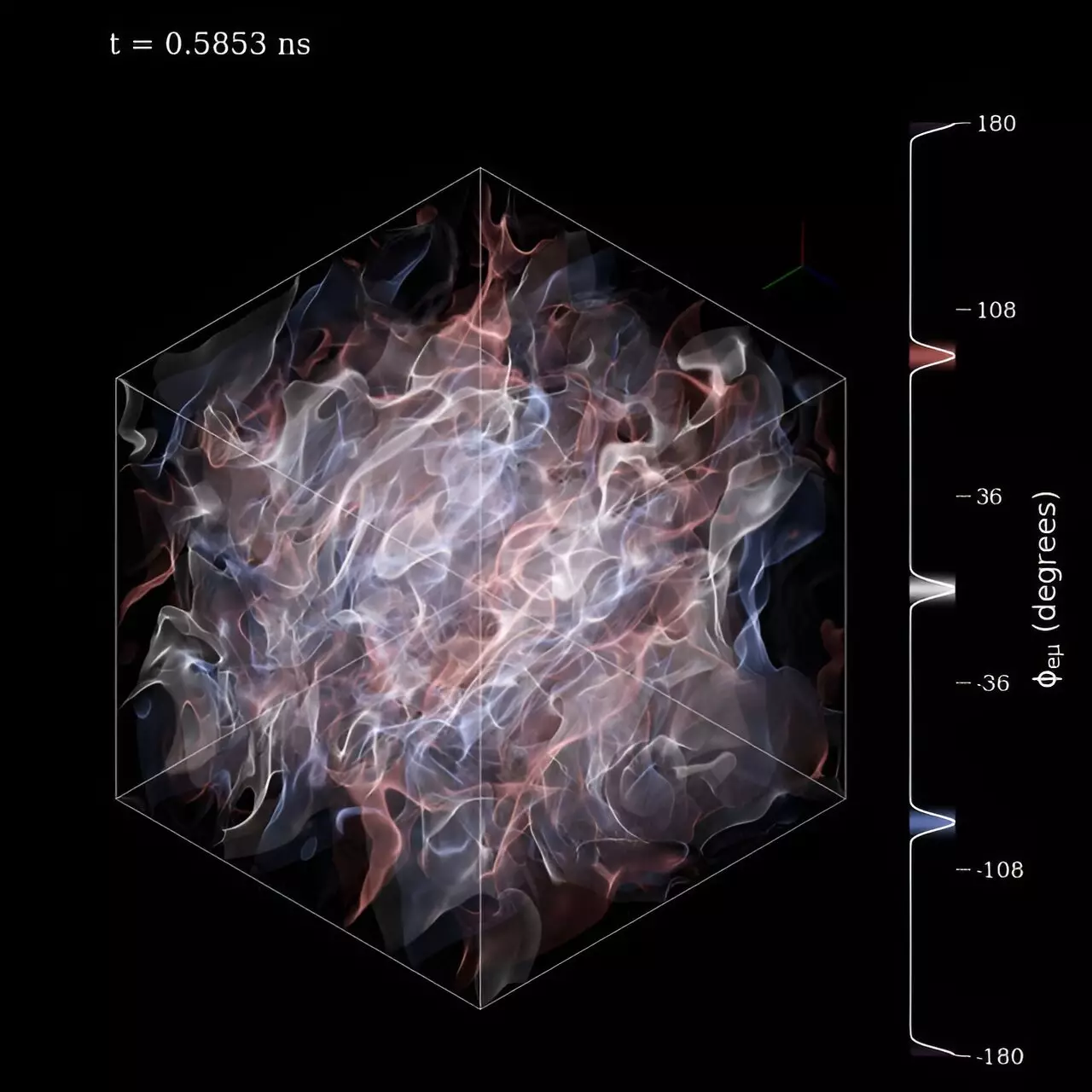Neutrinos, the elusive subatomic particles that permeate our universe, possess a unique property known as “flavor.” This quantum mechanical characteristic allows them to oscillate between different forms as they travel across vast distances in space. This transformation often complicates efforts to track their physical movement, particularly in chaotic environments like supernovae and neutron star mergers. The intricate tapestry of interactions and an overwhelming number of neutrinos make it a daunting task for scientists to monitor even a fraction of these particles effectively.
A New Approach to an Age-Old Problem
Recent research has taken a significant step forward in addressing this dilemma by introducing an innovative method of tracking neutrino behavior. By incorporating the complex interplay of quantum mechanical flavor changes into traditional calculations of neutrino movement, researchers have managed to simplify an otherwise convoluted process. This semi-classical angular-moment-based approach reduces the sheer complexity of modeling neutrinos in these dense astrophysical environments, paving the way for a deeper understanding of their roles and behaviors during catastrophic events.
The implications of this approach are far-reaching. Neutrinos are not just passive bystanders in cosmic explosions; they carry a considerable fraction of the energy released in supernovae and neutron star mergers. Understanding their behavior is fundamental for scientists aiming to decipher the mysteries of stellar evolution and nucleosynthesis—the processes responsible for the creation of heavy elements during these explosive phenomena.
The Quintessential Messengers
Supernovae and neutron star mergers act as cosmic laboratories, emitting various types of messengers—photons, gravitational waves, and, of course, neutrinos. Each type offers a different lens through which scientists can gain insights into astronomical events. However, the challenge remains: to utilize these messengers effectively, one must possess a thorough understanding of neutrino physics. The novel method developed in the recent study aims to bridge this gap, allowing for predictive models concerning the interactions of neutrinos that delineate the production of heavy elements in the aftermath of stellar explosions.
The angular moments, which condense the dynamics and flux of neutrinos into manageable equations, serve as a critical tool in this endeavor. By streamlining calculations regarding neutrino flavor transformations, researchers can gain crucial insights into the mechanisms at play during these violent celestial events.
The Promise of Fast-Flavor Transformations
One exciting avenue explored in this research involved a specific type of neutrino flavor transformation known as “fast-flavor.” This transformation is heavily dependent on angular information, and the researchers’ findings indicate that their newly developed method effectively captured the nuances of this process. The promise shown by this preliminary investigation suggests that the approach could be beneficial for further studies in astrophysics, especially when grappling with the complexities of flavor transformation in neutron star merger remnants.
The pursuit of understanding neutrinos and their transformative behavior in astrophysical contexts is vital for advancing our grasp of the universe. The innovative methods being developed are not merely academic exercises—they represent a robust framework upon which future discoveries about the cosmos can be built. Scientists are now better equipped to navigate the intricate dance of neutrinos in stellar cataclysms, opening doors to new revelations that could reshape our comprehension of the universe’s grand narrative.

